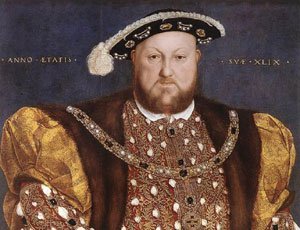LA MORTE A VENEZIA DI THOMAS MANN: RIASSUNTO E COMMENTO
Uno dei autori tedeschi più studiati a scuola è Thomas Mann, famoso soprattutto per la saga familiare I Buddenbrook: decadenza di una famiglia. Tuttavia, lo scrittore premio Nobel ha scritto numerose opere, tra cui La morte a Venezia, un romanzo breve pubblicato nel 1912 e considerato uno dei lavori più significativi di Mann (nel 1971 ne è stato tratto anche un film per la regia di Luchino Visconti). Stai studiando La Morte a Venezia a scuola? Di seguito troverai sia un breve riassunto con commento dell’opera, sia una sintesi in inglese nel caso tu stia leggendo La morte a Venezia come parte del programma di letteratura inglese (magari confrontando l’autore tedesco con altri autori inglesi del periodo).
DEATH IN VENICE: RIASSUNTO IN INGLESE DI LA MORTE A VENEZIA
The main character of Death in Venice is Gustav “von” Aschenbach, a famous author in his early fifties who has recently been ennobled in honour of his artistic achievement. He has constantly and orderly dedicated his whole life to art. After the death of his wife, he has the sudden desire to travel, to have new experiences and to change, so he decides to go to a Mediterranean location. After a false start in traveling to Pula on the Austro-Hungarian coast, Aschenbach realises he “was meant” to go to Venice and takes a suite in the Grand Hotel des Bains on the Lido island. Among the guests of the hotel, he notices an aristocratic Polish family and a 14-year-old boy wearing a a sailor suit who is with them. Aschenbach is startled and realises that the boy is incredibly handsome, like a Greek sculpture. His older sisters, by contrast, are so severely dressed that they look like nuns. Later, while spying the boy and his family at a beach, the man finds out that the boy’s name is Tadzio.
Soon the hot, humid weather begins to affect Aschenbach’s health, so he decides to move elsewhere. On the morning of his departure, he sees Tedzio again, and he regrets his decision to leave. When he reaches the railway station and discovers his trunk has been misdirected, he is happy and decides to remain in Venice waiting for his lost luggage.
Over the next weeks, Aschenbach’s interest for the lad develops into obsession as he watches him constantly and secretly follows him. One evening, the boy smiles at him, and Aschenbach runs outside in the empty garden whispering aloud “I love you”. During his next trip to Venice, Aschenbach is warned about an unspecified contagion, but the authorities deny that the contagion is serious, so tourists continue to wonder round the city. Aschenbach at first ignore the danger because he thinks that the city’s disease is akin to his own hidden passion for the boy. At the hotel, one night, a street band entertains the guest and the man glances at Tadzio, who is leaning on a nearby parapet in a classically beautiful pose. The boy looks at Aschenbach and the man thinks that the attraction may be mutual.
Even if authorities keep going saying that the sirocco is the only health risk, he finds out (thanks to a British travel agent) that there is a serous cholera epidemic in Venice instead. Aschenbach considers warning Tadzio’s mother of the danger; then, worried to lose Tadzio, decides not to tell anything to the family.
One night, a dream filled with orgiastic Dionysian imagery reveals to him the sexual nature of his feeling for Tadzio. Afterwards, Aschenbach follows and stares at the boy more openly even if his feelings, although passionately intense, remain unvoiced. He never touches Tadzio or dares speaking to him. However, Aschenbach begins to worry about his aging face and body, so, in an attempt to look more attractive, he visits the hotel’s barber shop daily and has his hair dyed. Then, he follows Tazio in Venice again, even if the city is in an oppressive heat. He loses sight of the boy; then, exhausted and thirsty, he buys and eats some strawberries and rests in an abandoned square.
A few days later, Aschenbach goes down to the beach to his usual deck chair. He feels weak and ill. On the beach there is Tadzio who is playing with other boys; afterwards, he angrily leaves his companion and wades over to Aschenbach’s part of the beach, where he stands for a moment looking out at the sea, then turns around to look to his admirer. Aschenbach tries to rise and follow him, but he collapses sideways into his chair. His dead body is discovered a few minutes later.
LA MORTE A VENEZIA DI THOMAS MANN: COMMENTO
Aschenbach, celebre scrittore, sfinito dal lavoro, sempre legato alla ricerca degli artifici dell’arte, compie un viaggio a Venezia per ritrovare, durante le vacanze, le forze necessarie a rinsaldare la sua ispirazione. Nel suo albergo di lusso al Lido, è colpito dalla bellezza di un ragazzo polacco, Tadzio, e nasce allora, senza che mai i due si parlino, una singolare intimità fra colui che crea con pena la bellezza, e colui che la rappresenta senza sforzo, solo con la sua esistenza. Situazione oscura, quasi equivoca, che fa continuamente ritornare alla mente di Aschenbach i Dialoghi di Platone. Invece di guarire, la sua anima già esaurita di forze si indebolisce ancor più. Egli vorrebbe fuggire, tanto più che si mormora che a Venezia si siano verificati casi di colera, ma il caso vuole che il suo tentativo di fuga non riesca. Aschenbach, soffrendo sempre più dell’inconsistenza del suo essere, che dovrebbe sembrare rappresentativo, ma che è pieno di debolezza, dopo avere cercato, in un estremo tentativo, di riattingere le vigorie perdute in rievocazioni paganeggianti che si immiseriscono gradatamente fino a esaurirsi in un’artificiale giovinezza a base di cosmetici e di tinture, perde ogni resistenza vitale, e rimane vittima del terribile contagio, che lo finisce rapidamente.
Quest’opera, breve ma densa, composta in uno stile sovraccarico di preziosismi, è caratterizzata da un raffinato estetismo. Essa ci parla di una coscienza morale che teme anche la minima decadenza e fa colpa all’artista di tutto il suo essere e perfino del suo innocente giuoco con le apparenze. Naturalmente l’ambiente di Venezia, essa stessa creatrice di bellezze, offre pretesto allo sfoggio di tanti splendori. Emerge l’estrema vivezza di colori nella descrizione della spiaggia del Lido, nelle gite di andata e ritorno tra il Lido e la casa, della città con le sue calli solitarie e tutti i suoi dedali, in cui ci si perde come nei meandri di un sogno. Però, malgrado le sue raffinatezze, la Venezia del Mann, dopo quella ancor più magnifica di Barrès e di D’Annunzio, mancherebbe forse di originalità se lo scrittore non vi avesse aggiunto qualche cosa di inatteso: gli Dei greci. Gli appaiono in riva al mare, e fanno in questo breve romanzo, già platonico, improvvisa irruzione: è Dioniso che finalmente decide della sorte di Aschenbach. Si sapeva della parentela di Venezia con Bisanzio, ma il riavvicinarla ad Atene rappresentò un’innovazione.
COMPITI: RIASSUNTI, TEMI E SCHEDE LIBRO
Studia insieme a noi grazie ai nostri riassunti:







